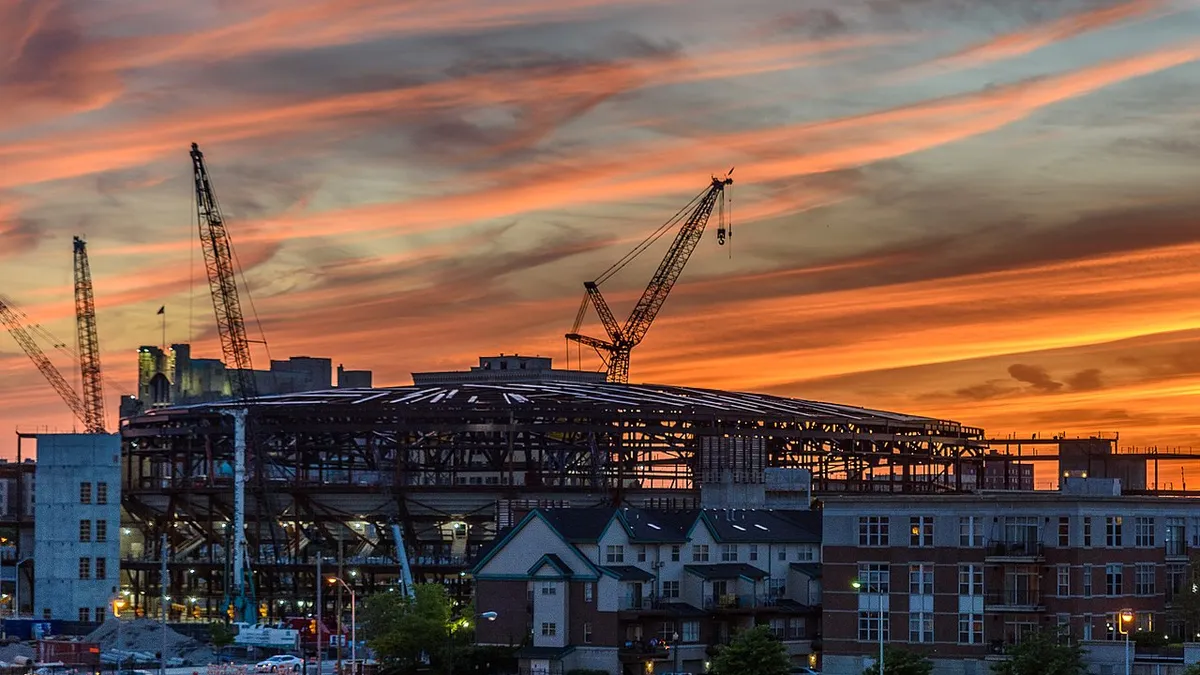Dive Brief:
- The Detroit Free Press and others report that Detroit's new sports venue, Little Caesars Arena, has officially opened, with a kickoff concert from Detroit-area native Kid Rock. The arena is home to both the NHL's Red Wings and the NBA's Pistons.
- The building is situated just blocks from Ford Field football stadium and Comerica Park baseball stadium in District Detroit, an emerging 50-block sports and entertainment hub between downtown and midtown.
- The new arena and the entertainment district together are part of a larger plan to boost Detroit's economy and add jobs.
Dive Insight:
Adding new sports facilities often is a double-edged sword for cities. While supporters cite the positive economic impacts to an area — such as new business developments and jobs — opponents point to drawbacks such as inefficient land use and the large amount of public funding that usually accompanies the new buildings. The funding battle has been prevalent during the planning and construction of the newly-opened Little Caesars Arena, most recently this summer with a lawsuit that requested to block $34.5 million in taxpayer-funded bonds for the project. The arena's up-front public costs are about $324 million of the estimated $863 million total arena price tag.
Detroit's choice to cluster together its major sports facilities is unique, following the lead of the Philadelphia Sports Complex. Such a design allows for better sharing of resources including parking and transit. Large cities tend not to have the ability to centrally clump these facilities due to a lack of land, but Detroit leaders took advantage of an opportunity to transform an area known for vacant and dilapidated buildings.
Integrating a sports facility of this size into its surrounding city environment presents a challenge in terms of sustainability and lessening negative impacts to the area. Architects and planners relied on some prominent smart design tactics. First, the arena's playing floor and seating bowl are set 40 feet into the ground so the building has a lower profile and requires less facade material at street level. Second, the "deconstructed" design places the box office, retail and Red Wings team offices outside of the arena itself. They are connected to the arena with a glass roof, but they're housed in an outer row of lower buildings that blend in with surrounding structures. This concept also boosts pedestrian friendliness by bringing more features out to the sidewalk instead of containing them inside the arena. The arena's design team is pursuing LEED certification, which would add it to a growing list of LEED-certified sports venues.
Although the new arena itself is expected to influence the economy of both the city and the state, new developments in the surrounding district are expected to have the biggest impact. In addition to new commercial buildings such as stores and restaurants, at least six residential developments are in the works. District Detroit touts the project as the city's largest residential development initiative in more than 20 years, and it will include some lower-rent units with income restrictions. It's also enticing residents and visitors with amenities such as free, high-speed WiFi inside the arena and in the surrounding 50-block district.
Some skeptics question whether the grand plans for District Detroit really will come to fruition. But if they do, it could be enough to help Detroit's turnaround into an urban success story.












